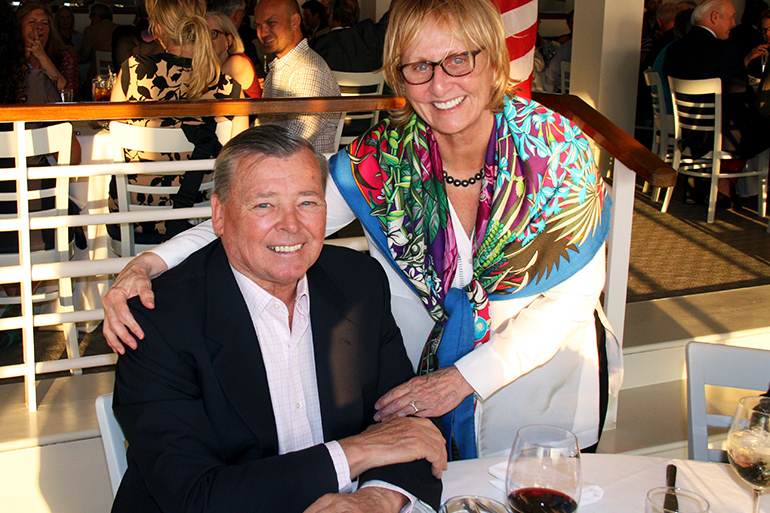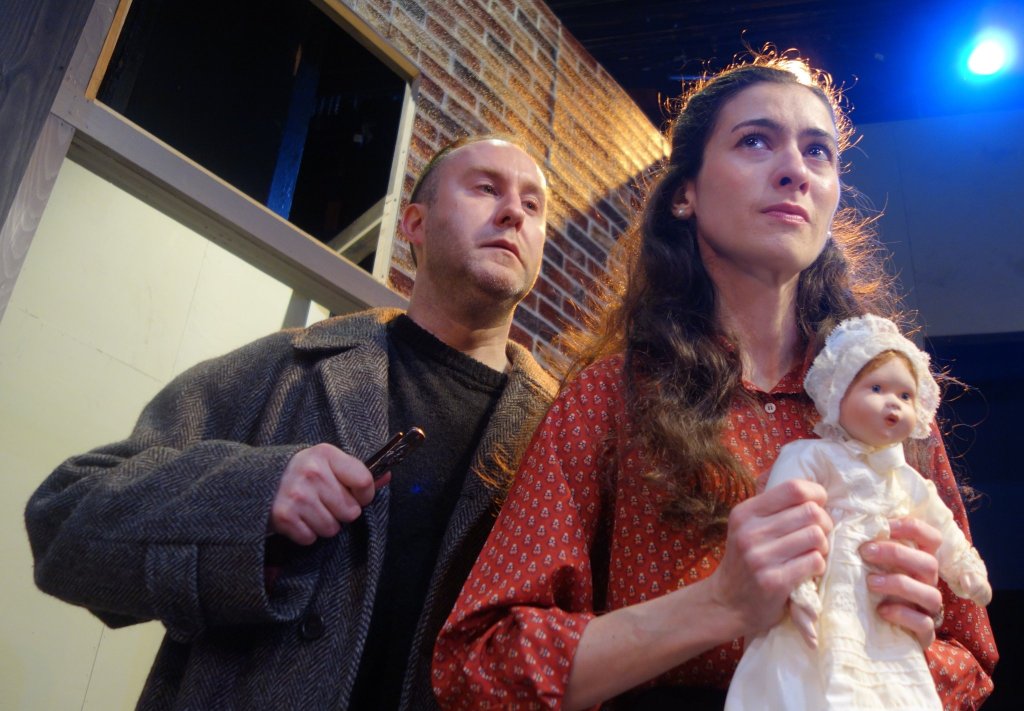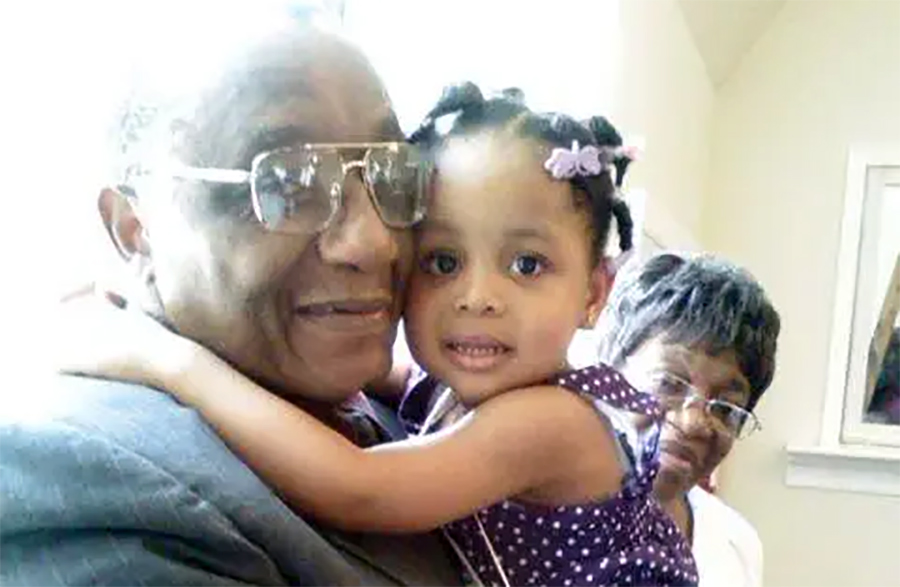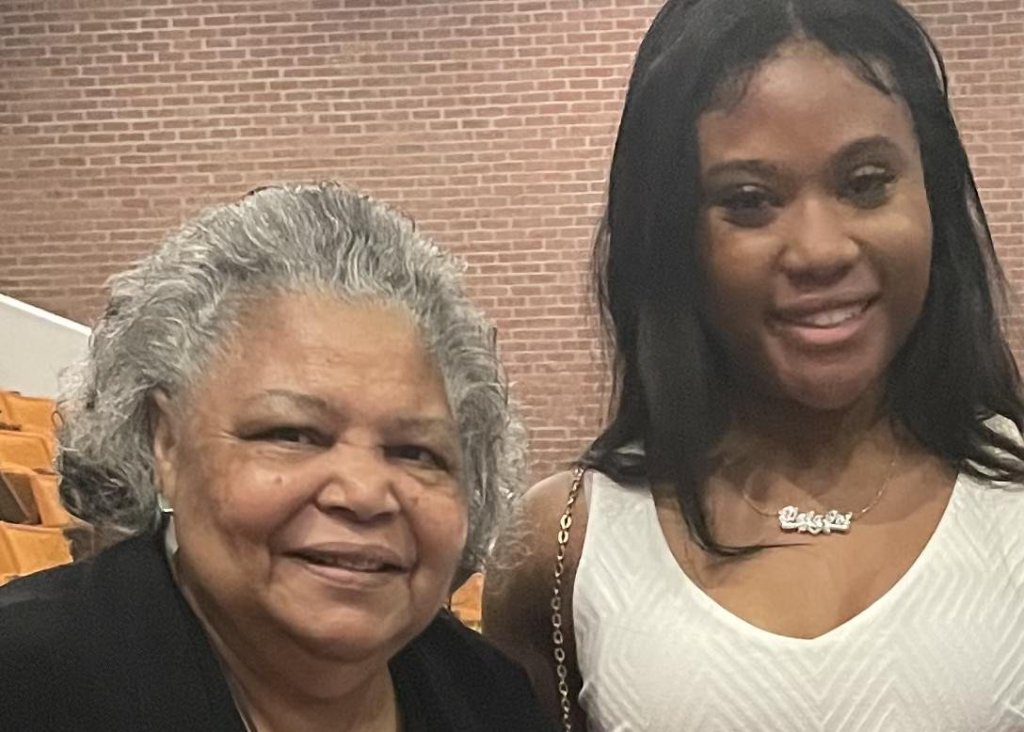Remembering Ben and Bonnie Krupinski After Fatal Air Tragedy

As of this writing, investigators are still trying to determine what caused the twin engine Piper Navajo aircraft to fall into the sea a mile off Indian Wells Beach in Amagansett last Saturday afternoon. Aboard that plane were 47-year-old pilot Jon Dollard of Hampton Bays, businessman and builder Ben Krupinski, 70, his wife, developer Bonnie Bistrian Krupinski, also 70, and their grandson Will Maerov, 22, who had just finished college at Georgetown. All died.
An hour before that plane crashed, I was having lunch on the upstairs deck at Baron’s Cove in Sag Harbor. It was a beautiful, sunny day, but then, as were drinking coffee, we saw ominous black clouds forming angrily in the sky to the south over East Hampton, Amagansett and surely the ocean beyond. A breeze began picking up. We asked for the check. Good idea to drive home before the storm hit.
Driving south, still in sunshine, on the East Hampton Sag Harbor Turnpike, I came upon this most astonishing thing. Just as I was passing the Ross School, about halfway home, there was a line in the road. Between the line and myself, it was dry. Past the line, it was wet. So there, crossing it, I was in the thick of it. It was dark as night. Huge raindrops thudded onto the car.
By the time I reached the turn where Cedar Street ends at North Main Street, I couldn’t see 10 feet and the floodwaters were up to my car’s running boards. Vehicles were sending billowing waves of water against cars coming the other way and thunder and lightning flickered and crashed. Frightened, I used my car cellphone to call my wife in Southampton to tell her to pull off the road if she encountered this storm.
She didn’t answer, so I left her a voicemail. I drove up Three Mile Harbor Road, and suddenly, as fast as it came, the storm was gone and the floodwaters were gurgling off into the drains. That was it.
The call to my wife occurred at 2:46 p.m. according to my phone records. I did not know this at the time, but at that moment, three miles away—two miles to the beach and one mile off its shore—the pilot of this plane, unable to control it any longer, lost his battle over the ocean. The authorities learned of the crash officially at 2:50 p.m.

The plane is one of several small planes that Krupinski owned. He’d enjoyed flying planes since he was a young man. And this one, a twin engine Piper PA-31 Navajo, had been one of his favorites. He’d owned it for at least eight years.
Friends later told me that, at the time of the crash, the Krupinski family was returning from Rhode Island. Bennie and Bonnie, as friends refer to them, were in this plane with the pilot and their grandson. Other family members, including a granddaughter, were in a second plane that landed safely at East Hampton Airport. The plan was they would all meet up for dinner at Cittanuova, one of the three restaurants that Ben owns.
The last time I spoke to Ben was 23 hours before the crash. It’s not important, but it does underline the reason why the loss of this family has been such a blow to this community. About 4 p.m. that day, I had called Ben on his cellphone to ask if he would renew his annual support for the Dan’s Papers Literary Prize competition. Of course he would, he said.
It’s about philanthropy. Bennie and Bonnie made their fortune from almost nothing. Both were born and raised in this town, went to East Hampton High School, became sweethearts, got married and raised a family here. They are local people. North of the Highway people.
Ben’s father owned a grocery store. Bonnie’s father owned a sand-and-gravel business. One of Ben’s first jobs was working for Bonnie’s father. At the time of their death, they lived on Three Mile Harbor Road, just down the way from my house.
Here’s the philanthropy part. When Ben Krupinski went into business as a builder in 1980, the inundation of wealthy people coming to this community was just beginning. Ben decided that there were builders and there were Builders. Homes built by master craftsmen were needed now, homes that might cost a lot but would be as close to perfectly constructed as possible.
Other builders have done this since, but Ben was among the first to do so. Among his early clients were Christie Brinkley, Billy Joel, Martha Stewart, Adrienne Vittadini, Steve Cohen and Leon Black. Word got around. Today hundreds of construction people work for his firm. There are offices in East Hampton, Southampton and Greenwich, Connecticut, and the list of architects they’ve worked with is more than 30.
Ben also owned restaurants, some on his own, some with partners in town. The restaurants are Cittanuova, East Hampton Point and the 1770 House. But his judgment was not perfect. Sometimes you take a risk and it doesn’t work out. Ben built a Chinese restaurant on Pantigo called Wei Fun around 2006 that, after two years, failed. It is a business office today. The others are a big success. The Krupinskis also owned an East Hampton air charter service.
Did success change the Krupinskis? Yes, it did. They decided that they would donate a good portion of their hundred-million-dollar fortune to local charitable works—physically. Many of the public institutions I am about to mention were built either for free or at vastly reduced cost as the Krupinskis’ contribution.
Recipients of pro bono work were the Scoville Hall in Amagansett after it burned down, renovations at the East Hampton Ladies Village Improvement Society building, renovations and additions at Guild Hall and the John Drew Theater, renovations and additions to the East Hampton Library, the restoration of the Amagansett Life Saving Station, the reconstruction of the Fowler Farmhouse in East Hampton and, in Water Mill, the construction of the $60 million Parrish Art Museum, for which Krupinski won the contract.
The value of the savings to the East End for these works is in excess of tens of millions of dollars, even 100 million dollars. Thus my call to Ben on Friday. There is nobody, nobody, who does this on that level in these parts. The son of a grocery store owner and the daughter of a sand-and-gravel company owner did this.
The Krupinskis were witty and fun, and, staying behind the scenes, enjoyed an unaffected, private family life. My most recent encounter with Bonnie Krupinski came two years ago when I went to her office on Springs Fireplace Road, where her family runs their sand-and-gravel business.
I had noticed, while writing about the airport noise battle between the locals and the FAA at the East Hampton Airport, that there was another place, shown on a map of East Hampton, where helicopters could land. It was at the Bistrian Sand and Gravel headquarters on Springs Fireplace Road. I went there and confronted Bonnie about this, and we both started laughing.
Both of our homes are just downwind of this site. But it is an emergency chopper site. Never going to be used for commercial operation. I told her that Dan’s Papers is in favor of all public works in the town that make sense, except in this case, it’s too close to either my house or hers.
“Ethics only goes so far,” I said proudly. And we started laughing again.
I miss them. We all do. I am an emotional wreck over what happened to them and their grandson, who had his whole life ahead of him.
The New York media, in covering this tragedy, have described the Krupinskis as “builders to the stars.” They may have been that. But it does not even begin to describe what they were about and what they meant to this community.
*****
Want another story about them? The press reports, correctly, that Bennie and Bonnie are co-owners of the prestigious East Hampton Golf Club.
It’s prestigious today. It was not prestigious when, 30 years ago, Pete Bistrian, Bonnie’s father, decided to make a golf course there with his bulldozers. It took him 20 years to complete. He liked golf.
Pete Bistrian owned all this land. On weekends, with the sand-and-gravel operation closed, he and his men would take their bulldozers to this land and clear out all the trees and shrubs for the 18 fairways. As weekend work, it took about a year to do this. Suddenly, out of nowhere, the town decided no, no, no, you can’t have a golf course here. A clubhouse is against zoning. Sprinkler systems were deemed inadequate. So the work stopped.
It stopped for 10 years, Bistrian figured he was done, and the cleared land was such a mess. But then an ingenious Riverhead lawyer named Bill Esseks got an idea. Bistrian had gotten planning board approval for the golf course landscaping years before. Just finish the fairways, put the greens in and start playing. But they won’t let me build a clubhouse, Bistrian said. So bring in a trailer for a clubhouse. It’s on wheels. It’s a vehicle. Like the landscaping, it doesn’t violate the zoning.
So Bistrian did that, members joined, the course opened and the town said okay, okay, we’ll give you a variance, build your damn clubhouse. So that is the history of this course, which today is, yes, prestigious.



